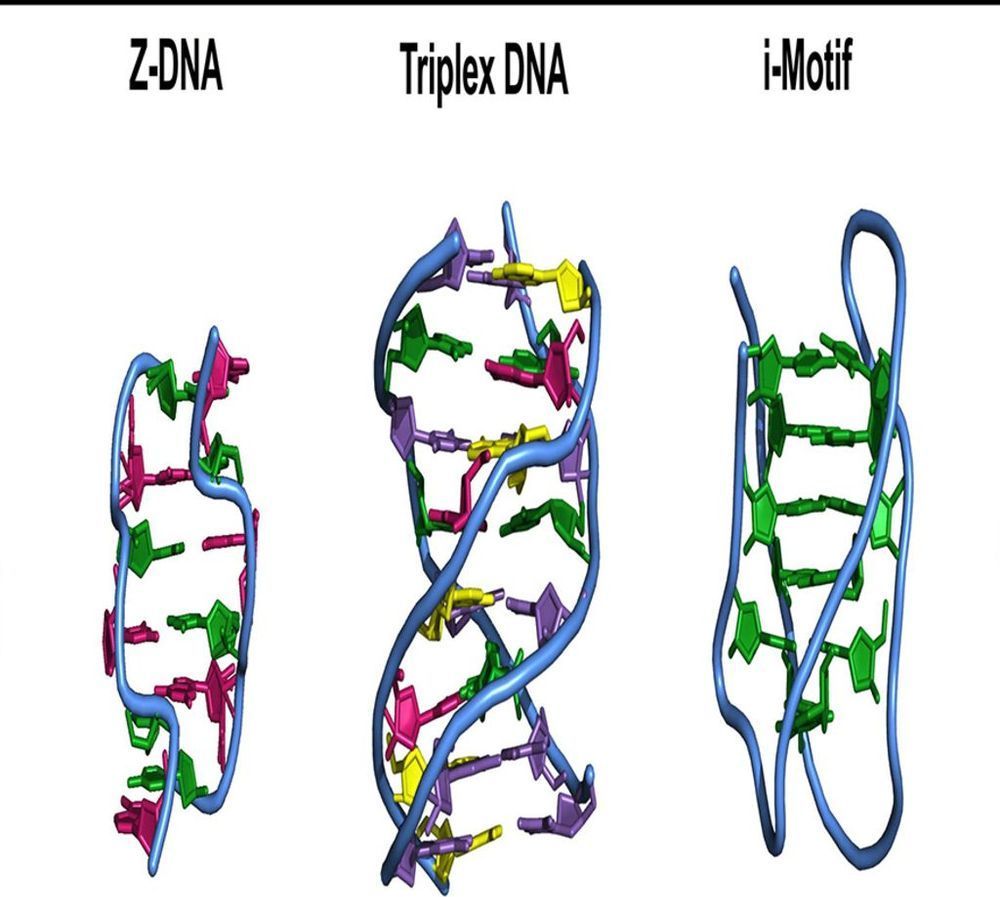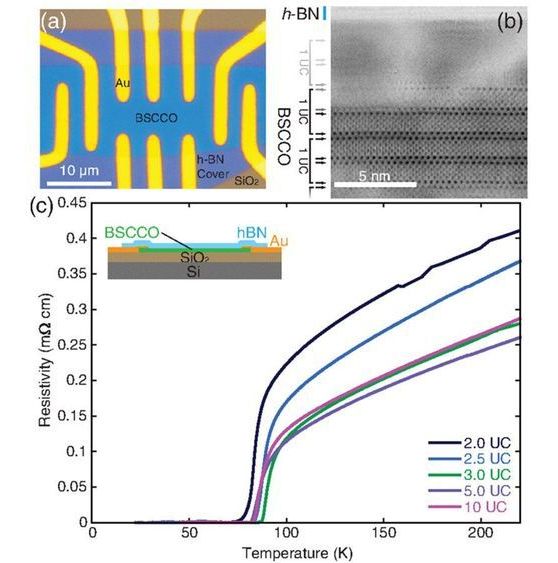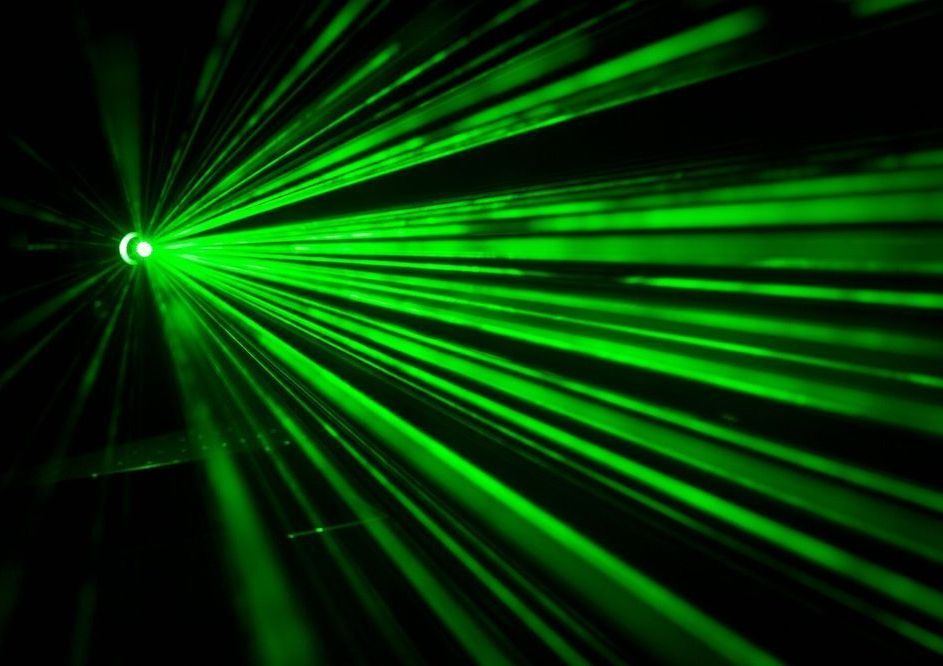A DNA “knot” breaks several rules thought hard and fast. Now the race is on to understand it. Elizabeth Finkel reports.
The story behind the writing of Frankenstein is famous. In 1816, Mary Shelley and Percy Bysshe Shelley, summering near Lake Geneva in Switzerland, were challenged by Lord Byron to take part in a competition to write a frightening tale. Mary, only 18 years old, later had a waking dream of sorts where she imagined the premise of her book:
When I placed my head on my pillow, I did not sleep, nor could I be said to think. My imagination, unbidden, possessed and guided me, gifting the successive images that arose in my mind with a vividness far beyond the usual bounds of reverie. I saw — with shut eyes, but acute mental vision, — I saw the pale student of unhallowed arts kneeling beside the thing he had put together. I saw the hideous phantasm of a man stretched out, and then, on the working of some powerful engine, show signs of life, and stir with an uneasy, half vital motion.
This became the kernel of Frankenstein; or, The Modern Prometheus, the novel first published in London in 1818, with only 500 copies put in circulation.
Circa 2016
Diamond computer chips running at 100-GHz have been demonstrated by Akhan Semiconductor. They are currently using design rules in the 100s of nanometers.
Developers are focusing on power applications on 12-inch wafers. They hope to drive down the costs of production with higher volumes. Power devices are moving into pilot production at a fab. They are using the fab-lite model—that is produce small- to medium-sized runs themselves. They will then transfer their process to foundries when they ramp up into volume production.
They have some customers for diamond MEMS devices—specifically for capacitive switching arrays used to dynamically tune antenna in high-end smartphones.
Scientists at Newcastle University have discovered neurons in insect brains that compute 3D distance and direction. Understanding these could help vision in robots.
Could a Mediterranean diet and exercise reduce dementia risk?
Researchers at Newcastle University are launching a new study to see whether eating a Mediterranean-style diet and being more physically active could improve brain function and reduce dementia risk.
Phase transitions occur when a substance changes from a solid, liquid or gaseous state to a different state—like ice melting or vapor condensing. During these phase transitions, there is a point at which the system can display properties of both states of matter simultaneously. A similar effect occurs when normal metals transition into superconductors—characteristics fluctuate and properties expected to belong to one state carry into the other.
Scientists at Harvard have developed a bismuth-based, two-dimensional superconductor that is only one nanometer thick. By studying fluctuations in this ultra-thin material as it transitions into superconductivity, the scientists gained insight into the processes that drive superconductivity more generally. Because they can carry electric currents with near-zero resistance, as they are improved, superconducting materials will have applications in virtually any technology that uses electricity.
The Harvard scientists used the new technology to experimentally confirm a 23-year-old theory of superconductors developed by scientist Valerii Vinokur from the U.S. Department of Energy’s (DOE) Argonne National Laboratory.
There’s egg on your face, literally. You tried to juggle some eggs, it all went wrong, and now you’ve got to shower and change your clothes.
Wouldn’t it be faster to just un-break the egg? Breaking it only took a few seconds, so why not do that again, but in reverse? Just reassemble the shell and throw the yolk and the white back inside. You’d have a clean face, clean clothes, and no yolk in your hair, like nothing ever happened.
Why don’t things happen in reverse all the time?
Every now and again, our radio telescopes capture a mystery. A single flash, as powerful in radio wavelengths as half-a-billion Suns, condensed into a burst that lasts just a few milliseconds at most. Now, for the very first time, astrophysicists have traced one of these one-off fast radio bursts (FRBs) to its source.
“This is the big breakthrough that the field has been waiting for since astronomers discovered fast radio bursts in 2007,” said astro-engineer Keith Bannister of Australia’s Commonwealth Scientific and Industrial Research Organisation (CSIRO).
The signal has been named FRB 180924 — they’re named for the date of detection — and it originated in the outskirts of a Milky Way-sized galaxy roughly 3.6 billion light-years from Earth.
Researchers from Lund University, together with the Roche pharmaceutical company, have developed a method to create a new blood marker capable of detecting whether or not a person has Alzheimer’s disease. If the method is approved for clinical use, the researchers hope eventually to see it used as a diagnostic tool in primary healthcare. This autumn, they will start a trial in primary healthcare to test the technique.
Currently, a major support in the diagnostics of Alzheimer’s disease is the identification of abnormal accumulation of the substance beta-amyloid, which can be detected either in a spinal fluid sample or through brain imaging using a PET scanner.
“These are expensive methods that are only available in specialist healthcare. In research, we have therefore long been searching for simpler diagnostic tools,” says Sebastian Palmqvist, associate professor at the unit for clinical memory research at Lund University, physician at Skåne University Hospital and lead author of the study.
A team of researchers affiliated with several institutions in Spain and the U.S. has announced that they have discovered a new property of light—self-torque. In their paper published in the journal Science, the group describes how they happened to spot the new property and possible uses for it.
Scientists have long known about such properties of light as wavelength. More recently, researchers have found that light can also be twisted, a property called angular momentum. Beams with highly structured angular momentum are said to have orbital angular momentum (OAM), and are called vortex beams. They appear as a helix surrounding a common center, and when they strike a flat surface, they appear as doughnut-shaped. In this new effort, the researchers were working with OAM beams when they found the light behaving in a way that had never been seen before.
The experiments involved firing two lasers at a cloud of argon gas—doing so forced the beams to overlap, and they joined and were emitted as a single beam from the other side of the argon cloud. The result was a type of vortex beam. The researchers then wondered what would happen if the lasers had different orbital angular momentum and if they were slightly out of sync. This resulted in a beam that looked like a corkscrew with a gradually changing twist. And when the beam struck a flat surface, it looked like a crescent moon. The researchers noted that looked at another way, a single photon at the front of the beam was orbiting around its center more slowly than a photon at the back of the beam. The researchers promptly dubbed the new property self-torque—and not only is it a newly discovered property of light, it is also one that has never even been predicted.
Researchers from the Moscow Institute of Physics and Technology and Lebedev Physical Institute of the Russian Academy of Sciences have designed and tested a prototype cathodoluminescent lamp for general lighting. The new lamp, which relies on the phenomenon of field emission, is more reliable, durable, and luminous than its analogues available worldwide. The development was reported in the Journal of Vacuum Science & Technology B.
While LED lamps have become commonplace, they are not the only clean and power-saving alternative to incandescent lamps. Since the 1980s, engineers around the world have been looking into the so-called cathodoluminescent lamps as another option for general lighting purposes.
Shown in figure 1, a lamp of this kind relies on the same principle that powered TV cathode-ray tubes: A negatively charged electrode, or cathode, at one end of a vacuum tube serves as an electron gun. A potential difference of up to 10 kilovolts accelerates the emitted electrons toward a flat positively charged phosphor-coated electrode—the anode—at the opposite end of the tube. This electron bombardment results in light.








